Award-winning nature and travel writer Anita Sethi embarks on a reflective journey in her home-city, appreciating flashes of beauty and solace she finds along the way
I’m stopped in my tracks by a startling spiral beneath me.
I kneel down and gaze at the intricate shell, which swirls in perfect curves. This is the home which the snail carries upon its back, its coiled shell large enough for it to curl up into completely, and there is the snail itself; never before have I felt so much awe at the sight of a snail or paused to look at one in detail.
Its body is a kind of purple colour with hints of green, and two long tentacles grow out of its head, hosting eyes on the tips, and two smaller tentacles pointing earthwards used for olfaction. I’ve often been fascinated with how creatures make homes for themselves, including this one who carries its home upon its own back.
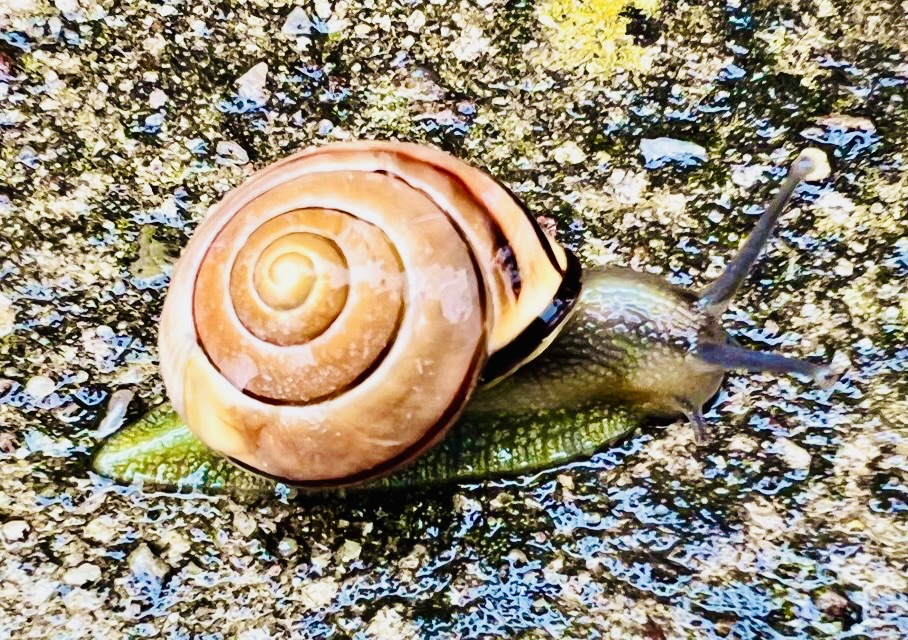
I’m on a Slow Ways walk through Stretford in Manchester. It’s a beautiful coincidence that I should have spotted a snail on this route through my home neighbourhood, where I grew up and currently reside – the snail being the symbol of Slow Ways itself. After a long time hurtling on a rat race, I’m learning to take it easier. With each footstep I’m learning the virtues of going at snail’s pace, which allows you to pause for breath, to stop and notice the details, to admire the beauty of the everyday.
“The walk is interwoven with both personal and cultural history as I grew up in the area, and here in Stretford my grandmother ran a corner shop not far from the Lancashire Cricket Ground”
As well as being filled with urban nature, my walk through Stretford also takes in some iconic cultural history – on Kings Road, the musician and one-time lead singer of The Smiths, Morrissey, grew up. The painter LS Lowry also lived in the neighbourhood for a time. The walk is interwoven with both personal and cultural history as I grew up in the area, and here in Stretford my grandmother ran a corner shop not far from the Lancashire Cricket Ground.
I walk on as Stretford becomes Old Trafford (technically still a part of Stretford), and the roar of football fans can be heard from the nearby stadium. Here in Old Trafford, not far from where the Trafford Bar tram station now stands, Sylvia and Christabel Pankhurst were born. They were the daughters of Emmeline Pankhurst, themselves renowned feminist campaigners too, though this fascinating history is far too neglected.
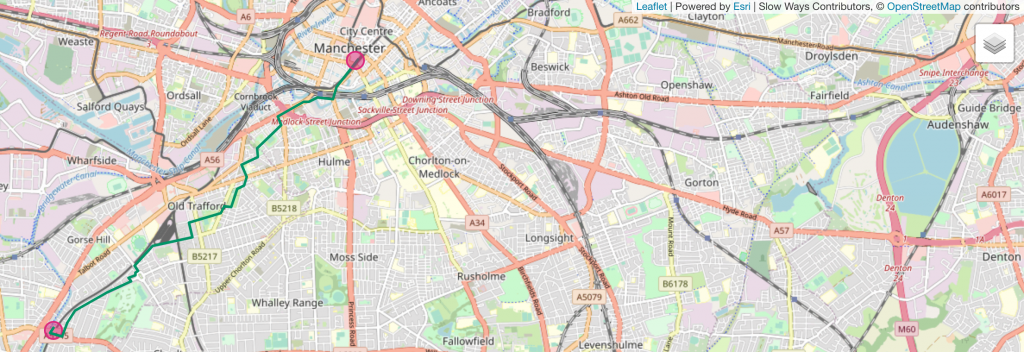
Old Trafford is of course more known for its football than its flowers, but during my walk I pause to admire wildlife galore: a photographic selection for you here. Growing up in an inner city, whilst I loved nature, I didn’t learn to name much of it and my walks are a learning curve: I spot hot pink fireweed, lilac globe thistles, blue meadow cranesbill and purple betony.
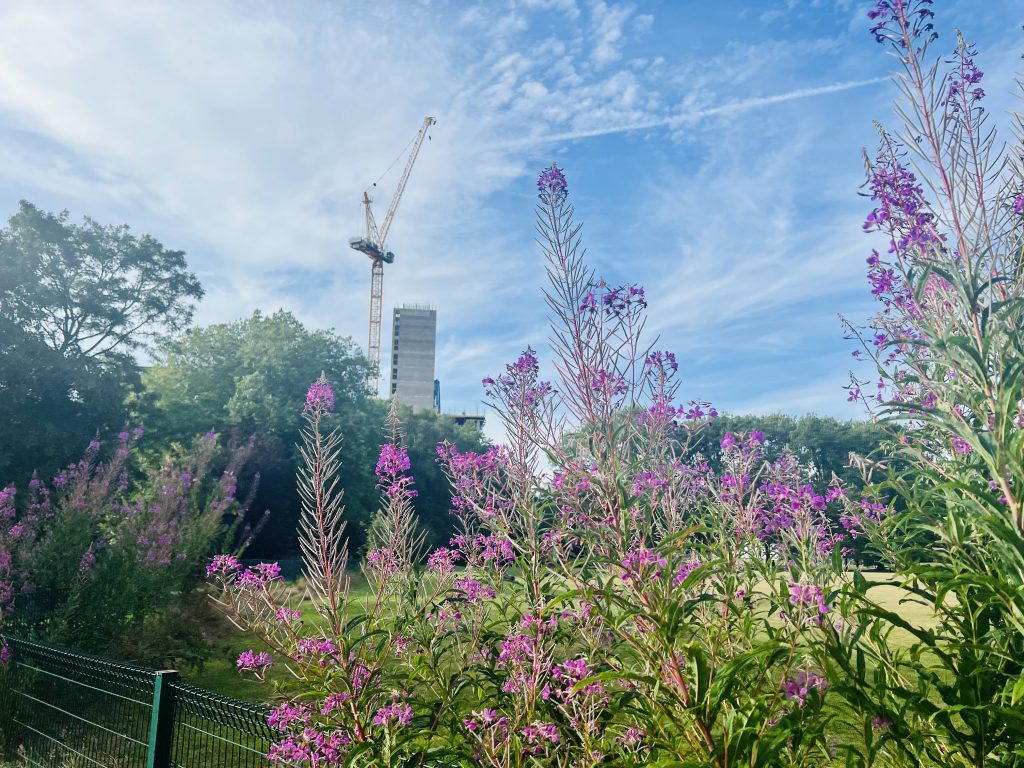
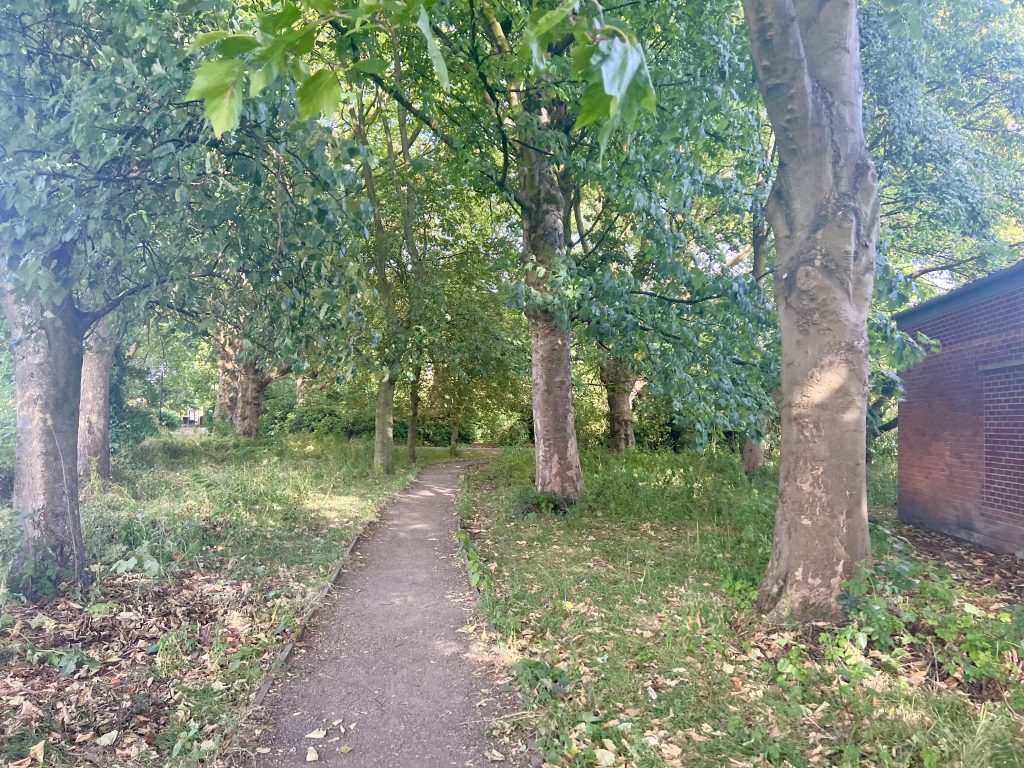
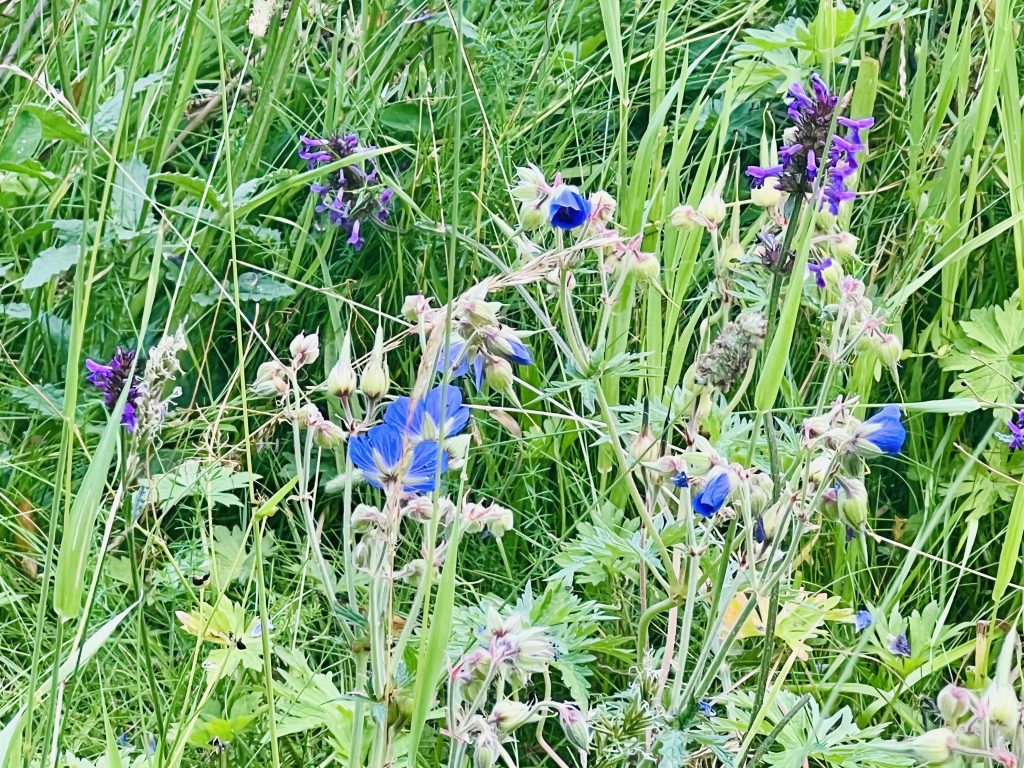
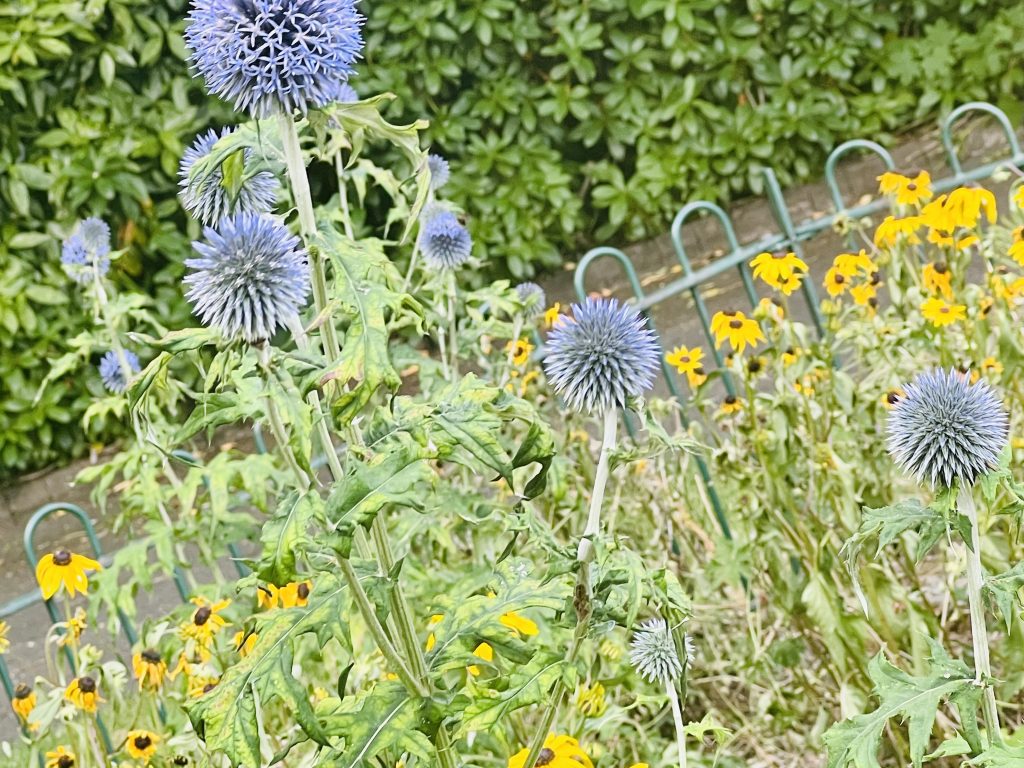
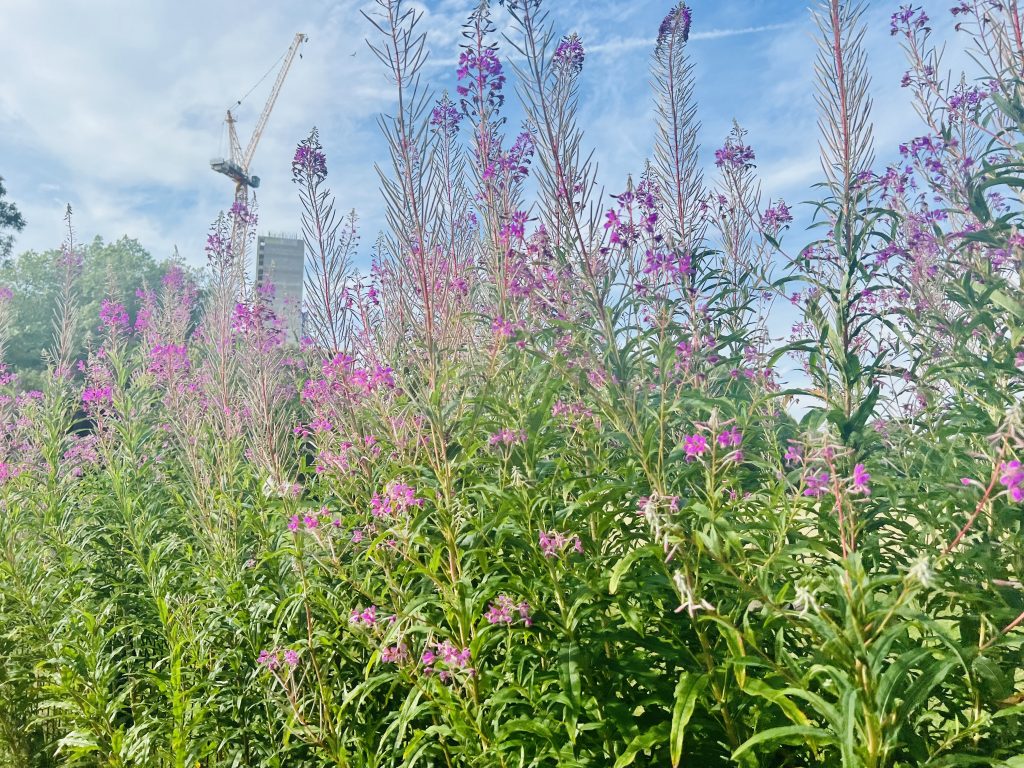
“Local parks are a lifeline to nature, exercise and some respite for so many”
I walk on and reach Hullard Park and a path shadowed by huge trees, and breathe deeply at the sudden cool shade on a sweltering summer’s day. I’m taken away from any sight or sound of traffic and feel suddenly at peace even amid a turbulent political and personal time. I remember how vital urban parks are, the lungs of cities and towns, crucial green spaces for us to take local walks.
Not everyone lives near vast woodlands or mountains or national parks for their everyday walks. Local parks are a lifeline to nature, exercise and some respite for so many. During lockdown I walked daily in Hullard Park and learnt to notice its nature more than ever, and become attuned to the changing seasons, the glory of blossom in spring and the bliss of birdsong and the dawn chorus, the poignant beauty of the leaves turning and falling in autumn, the frost covering the fallen leaves in winter, and the beginning again of another spring. Now the tall trees are providing me with welcome respite from the heatwave.
I walk on along Ayres Road, which captures the quintessentially multicultural nature of the area, with its South Asian, Afro-Caribbean and Polish food stores, a mouthwatering walk past Manchester Superstores with a treasure trove of bright fruit and veg outside, pineapple, watermelon, mango, avocado, blueberries, strawberries, golden apples, and herbs and spices, chilli, okra, mint, lahana, parsley, spinach, saag.
Onwards, and I reach Seymour Park, my local childhood park. I take some time to stand beneath a tree and look up through its branches and feel stress drain away, feel held by the tree in a way, gain a new perspective on the vastness of nature and relative minuteness of our lives. Onwards, and I see tower blocks and cranes between the gaps of tall, purple wildflowers.
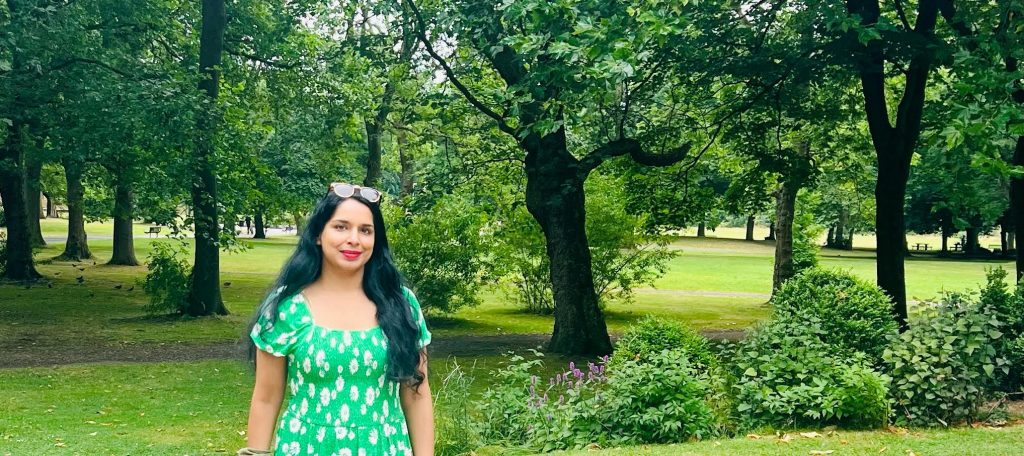
Onwards and before too long I see the city centre ahead, the bridges and archways of Deansgate, and feel just what an ‘inner city’ area this is – walking distance to the centre itself. But I want to savour what I have seen on this particular route before venturing further, and so about-turn, going slowly, going at snail’s pace, and with each footstep feel anew the startling flashes of beauty and solace to be found along slow ways.

Anita Sethi
Anita Sethi is an award-winning nature and travel writer born in Manchester, UK. She is author of I Belong Here: a Journey Along the Backbone of Britain and is also published in several anthologies including Women on Nature, The Wild Isles and Seaside Special: Postcards From the Edge. She has written for the Guardian, Observer, Sunday Times, BBC Wildlife, and Vogue among others and loves walking.